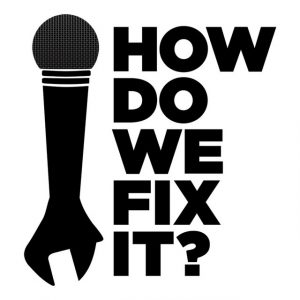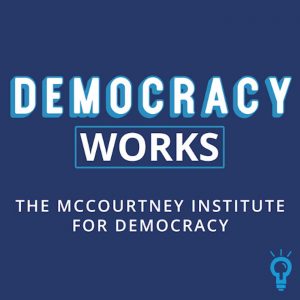
On April 25, 2022, Florida Governor Ron DeSantis signed Senate Bill 524 into law, and with it, moved forward with a number of measures related to elections. One of the bill’s provisions bans ranked-choice voting for all elections conducted in Florida. The legislation states it is «prohibiting the use of ranked-choice voting to determine election or nomination to elective office; voiding existing or future local ordinances authorizing the use of ranked choice voting.» In light of this law’s passage in Florida, we ask the questions: «What is ranked-choice voting?» and «What electoral systems are used in the United States (and else where)?»
The United States Constitution provides some, but not full guidance on how elections are to be implemented. Article 2, Section 1 requires that the President of the United States be elected by the Electoral College via majority vote in a single-winner election. Looking at Article 1, Section 4, the Constitution grants to the states the authority to determine the rules (electoral system) by which the states elect their U.S. Senators and Representatives. Additionally, the Seventeenth Amendment alters Article 1, Section 3 of the Constitution to replace the phrase «chosen by the legislature thereof» with «elected by the people thereof». This amendment, ratified in 1913, changed how U.S. Senators were elected. Prior to its ratification, Senators were chosen by state legislatures, after ratification, the voters cast direct votes for their state’s U.S. Senators.
This is about as far as the U.S. Constitution goes to outline how voting takes place in the United States. The majority of decisions and rules centered around voting systems, as demonstrated by Florida’s recent legislation, are done at the state and local level. In the U.S., most federal and state-level officials are elected via plurality vote; the candidate who wins the largest share of the vote wins the election. This is not to say that plurality voting is the only type seen in the U.S. Some states and cities have adopted alternative systems, both in which winners are awarded and ballots are tabulated. Some of the more notable examples are the ranked-choice voting system, used in some or all elections in states like Maine & Alaska, as well as cities such as Minneapolis, Oakland, New York, Las Cruces, Santa Fe, and Benton County, Oregon.
The ranked-choice voting system, sometimes referred to as instant-runoff system, is designed to find a candidate that the majority of the electorate find suitable for the position. Voters rank candidates by preference on their ballots. If a candidate wins a majority of first-preference votes, they are declared the winner. If no candidate reaches that threshold, the candidate with the fewest first-preference votes is eliminated, and those votes are transferred to second-preference choices. A tabulation is then done to determine if any of the remaining candidates reached the majority; if not, the process is repeated until a candidate reaches outright majority. There are a number of other voting systems used around the world, including proportional representation and runoff systems, all of which with their own unique benefits and disadvantages.
This week’s Current Events resources examine electoral voting systems. The resources shared provide context and information about various electoral voting systems and the debates around their possible impact if implemented in the U.S.
Looking for more current events resources? Sign up at our We the Teachers Educator Resource Community page, where you can find all of our Current Events, and learn about our other programs!
Essential Questions, Vocabulary & Extend the Resources:
- Who is in charge of local, state and federal elections?
- What election rules are set by the Constitution and federal government?
- What are the different types of electoral systems currently being used in the United States?
- How do the electoral systems used in the U.S. compare to those used in other democratic countries?
- What are the similarities and differences between the various types of electoral systems?
- In your opinion, what should be the primary objectives of a country’s electoral system?
- Thomas Jefferson is attributed with the quote, “… Laws and institutions must go hand in hand with the progress of the human mind.. As that becomes more enlightened, institutions must advance also to keep pace with the times.” How does this quote relate to the debate around electoral system reform?
Click here for a hardcopy of the Essential Questions & Electoral Systems Vocabulary
Click here for a hardcopy of the Extend the Resources handout with suggested lesson activities and extensions
Videos:
Podcasts:
Changing the Way We Vote, How Do We Fix It?, December 17, 2021
U.S. Voting Systems, Civics 101, NPR
How to end democracy’s doom loop, Democracy Works, July 5, 2021
Fixing the Electoral System: With Guest Nick Troiano, The Michael Steele Podcast, April 16, 2021
Background Resources:
- Alternative Voting Systems, National Conference of State Legislatures
- Types of Voting Systems, FairVote
- Electoral Systems in the United States, FairVote
Recent Articles:
- DeSantis signs controversial voting bill, creates election crimes office, Tampa Bay Times, April 25, 2022
- Partisan ‘doom loop’? The answer is more parties, this group says, Roll Call, April 8, 2022
- More U.S. locations experimenting with alternative voting systems, Pew Research Center, June 29, 2021
- Le Pen Could’ve Won Here, The Bulwark, April 27, 2022
Recent Editorials:
- American Democracy Is Broken. Can Proportional Representation Fix It?, The New Republic, March 7, 2022
- New York’s courts stood up to gerrymandering. Congress should, too., The Washington Post, April 28, 2022
- How Proportional Representation Gave American Voters Meaningful Representation in the 1900’s, Sightline Institute, October 5, 2021
- In an era of electoral fragmentation, Labour must learn to embrace power-sharing, The Guardian, April 28, 2022
Lesson Plans:
- Voting Systems: What is Fair?, Citizen Advocacy Center
- Winner-Take-All: The Two-Party System, Constitutional Rights Foundation
- Is the System Fair?, NewseumEd
- Bell Ringer: Ranked Choice Voting, C-SPAN Classroom
- Rank Your Choice, iCivics
Lesson Plans for Younger Students:
- The Great Compromise still affects the United States today, Newsela
- How voting in the U.S. is harder than just checking a box, Newsela
Media & News Literacy Lesson Plans:
Media Literacy Resources – Newseum
Resource Library – News Literacy Project
News & Media Literacy Lessons – Common Sense
Media Misinformation, Viral Deception, and «Fake News» – University of Wyoming
Evaluating Sources in a ‘Post-Truth’ World: Ideas for Teaching and Learning About Fake News – New York Times Lessons



